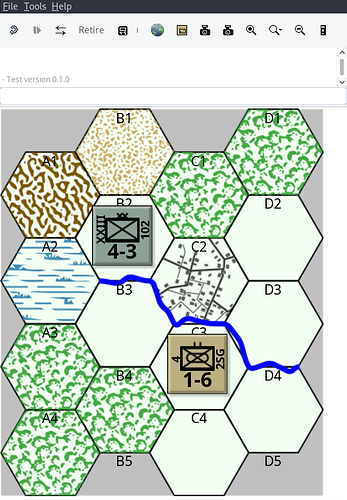Hi all,
Spurred by a recent thread and a somewhat older thread, I decided to do a bit of developments.
Essentially
-
I’ve made a Python script that generates XML
Prototypesnippets and associated images that one can import into a VASSAL module. These snippets definesPrototypes to make NATO App6 symbology to add to pieces. You can find pre-build snippets and images here (PNG and SVG).armouredinfantrysurface combatantmissile cruise



This uses my LaTeX package
wargameto make the graphics. That package has a fairly complete set of the NATO App6 symbology.Please refer here for more on how to use this.
-
I’ve made an example of building a complete VASSAL module using Python and my module
pywargame. Details can be found here and the module Test.vmod can be downloaded.
This also uses the LaTeX packagewargameto make the graphics but can serve as an inspiration even if you use something different to make the graphics (all I make for this example is the board and some nation specific background images).However, the main point is to use the
pywargameAPI to build a module directly in Python. By doing so, I think it is fairly easy to define more complex behaviour of the VASSAL module.In this example, I use the snippets from the first part above.
I use similar approaches to all the VASSAL modules I’ve made.
Please refer to this GitLab page for more.
Hope someone will find this useful.
Yours,
Christian
